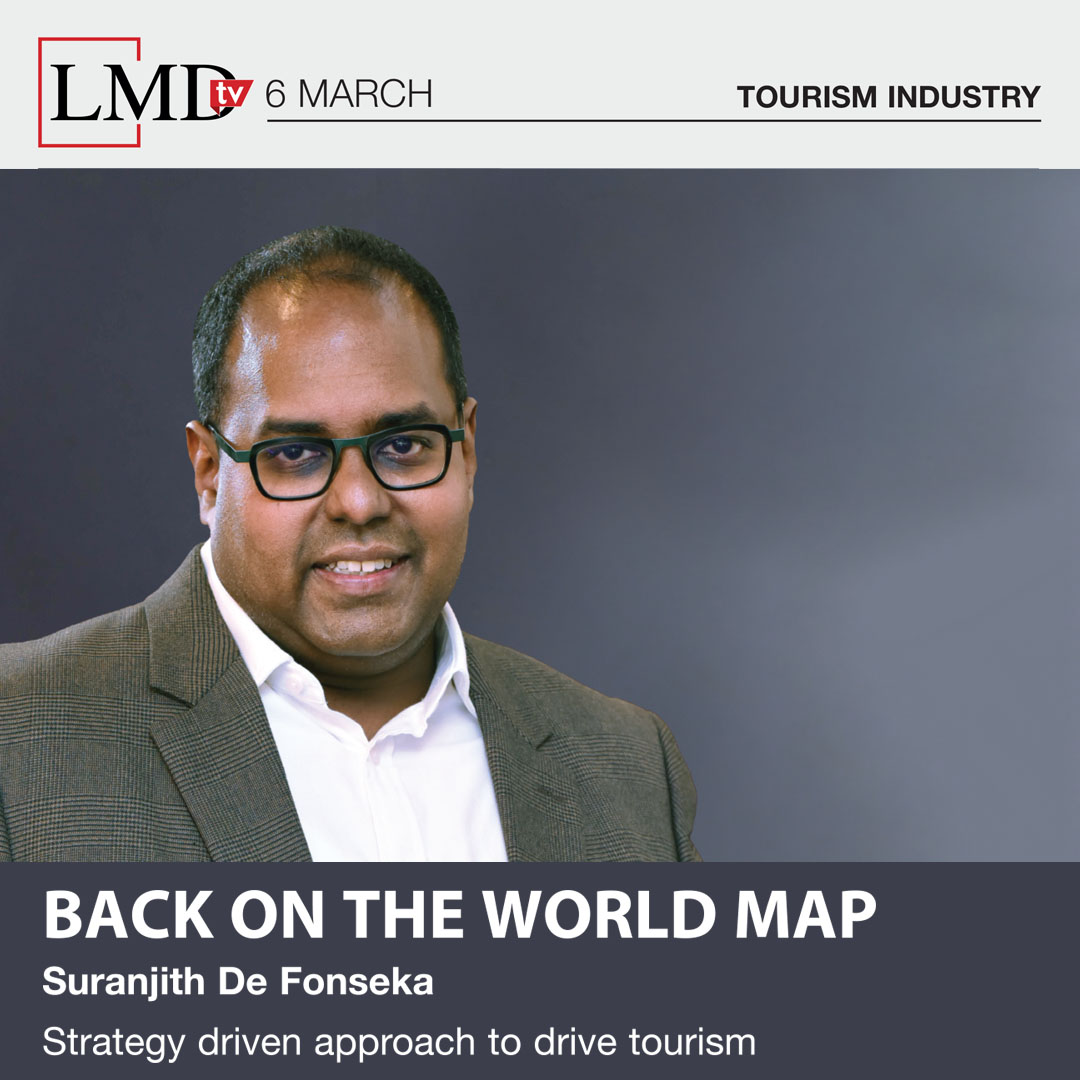LMDtv 4
 Sri Lanka recorded an impressive 1,487,303 visitors last year, showcasing the tourism industry’s resilience and ability to bounce back. Commenting on the industry’s performance, Managing Director of the Travels Sector of Acorn Group Suranjith De Fonseka stated: “From what we are seeing in 2024, it looks like we’re going to return to the way things were prior to the pandemic and the Easter Sunday attacks.”
Sri Lanka recorded an impressive 1,487,303 visitors last year, showcasing the tourism industry’s resilience and ability to bounce back. Commenting on the industry’s performance, Managing Director of the Travels Sector of Acorn Group Suranjith De Fonseka stated: “From what we are seeing in 2024, it looks like we’re going to return to the way things were prior to the pandemic and the Easter Sunday attacks.”
The country’s main source markets for inbound travel include India – which tops the list – as well as Russia, the UK and Germany. Traditional markets such as Australia and Canada are also prospective, driven by the large numbers of Sri Lankan living in those countries.
De Fonseka outlined India’s immense potential: “We have India at No. 1, which was the case in 2018 and still is. We happen to be on their doorstep, which is a huge advantage. The growing middle class in India has a never-ending need to discover new places; and I think it helps that we’re so close.”
Sri Lanka is also seeing many novel attractions added to its already bountiful tourism portfolio with the Pekoe Trail being the latest. Listed on National Geographic’s coveted Best of the World 2024 list, De Fonseka affirms that the trail has been extremely well received in Sri Lanka’s main tourism source markets.
He noted: “Post-pandemic, we’re seeing travellers wanting activity-based holidays where they enjoy the environment at their own pace – the Pekoe Trail really fits in here.”
“Another product that we’ve seen in the last couple of months is literary and arts festivals, which are coming back,” he mentioned, adding that Sri Lanka has seen four such festivals in the first two months of this year: “We’re trying to put Sri Lanka on the map and that’s great because it shows the depth of the destination.”
He also spoke about Sri Lanka’s positioning in terms of pricing: “Historically, Sri Lanka has positioned itself as one of the cheapest countries in Asia and I’m against that because it doesn’t do justice to what we have to offer as a country.”
“We’re certainly not the cheapest anymore,” De Fonseka noted, pointing out that Sri Lanka’s pricing is increasing in the wake of revisions to the tax structures and high energy costs.
He elaborated: “I don’t think we are overpriced; but it’s extremely important that we’re mindful that we still offer good value – that’s where we need to work twice as hard. The pricing is justifiable if we’re still delivering great value.”
President Ranil Wickremesinghe has stressed the need to attract high spending tourists who would spend a minimum of US$ 500 a day. De Fonseka agrees with this.
He explained: “I think that any tourist destination should cater to all ends of the market – you see this in mature destinations like Thailand where you’ll have a 10 dollar room and US$ 1,000 room. The good thing about having that broad spectrum is you ensure that the benefits of tourism reach grassroot levels.”
Sri Lanka also aims to attract five million tourists by 2030, which he believes is an achievable goal – but it is one that has to be “driven in a very strategic manner.”
De Fonseka cited the example of Yala National Park: “[There are] queues of jeeps waiting to enter the park and that doesn’t offer a great experience to travellers. There are many other national parks in Sri Lanka so why don’t we create awareness about them?”
He continued: “We also need to grant approvals for accommodation providers to make their way into these parks. If we take each park and have a strategy to attract travellers, we can manage without a problem.”
“Having said that, I don’t think we should be driving a volume strategy as a country,” he said, explaining that as a small country, Sri Lanka already has issues with over-visitation.
“If we are to attract large numbers [of travellers], we’re going to have major issues; we need to shift our strategy from volume to value driven,” he concluded.




